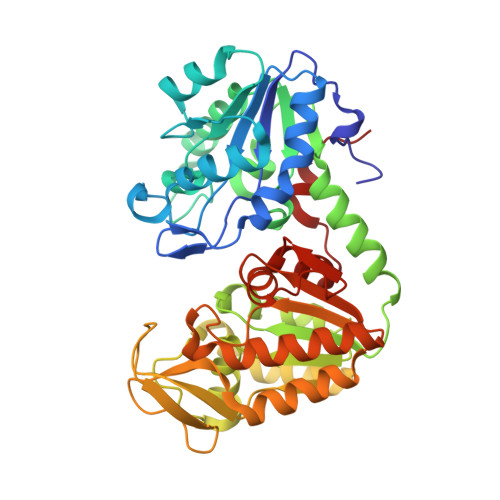Metal fluorides-multi-functional tools for the study of phosphoryl transfer enzymes, a practical guide.
Pellegrini, E., Juyoux, P., von Velsen, J., Baxter, N.J., Dannatt, H.R.W., Jin, Y., Cliff, M.J., Waltho, J.P., Bowler, M.W.(2024) Structure
- PubMed: 39106858
- DOI: https://doi.org/10.1016/j.str.2024.07.007
- Primary Citation of Related Structures:
2X13, 2X14, 3ZI4, 4AXX - PubMed Abstract:
Enzymes facilitating the transfer of phosphate groups constitute the most extensive protein families across all kingdoms of life. They make up approximately 10% of the proteins found in the human genome. Understanding the mechanisms by which enzymes catalyze these reactions is essential in characterizing the processes they regulate. Metal fluorides can be used as multifunctional tools to study these enzymes. These ionic species bear the same charge as phosphate and the transferring phosphoryl group and, in addition, allow the enzyme to be trapped in catalytically important states with spectroscopically sensitive atoms interacting directly with active site residues. The ionic nature of these phosphate surrogates also allows their removal and replacement with other analogs. Here, we describe the best practices to obtain these complexes, their use in NMR, X-ray crystallography, cryo-EM, and SAXS and describe a new metal fluoride, scandium tetrafluoride, which has significant anomalous signal using soft X-rays.
Organizational Affiliation:
European Molecular Biology Laboratory, 71 avenue des Martyrs, CS 90181, 38042 Grenoble, France.



















